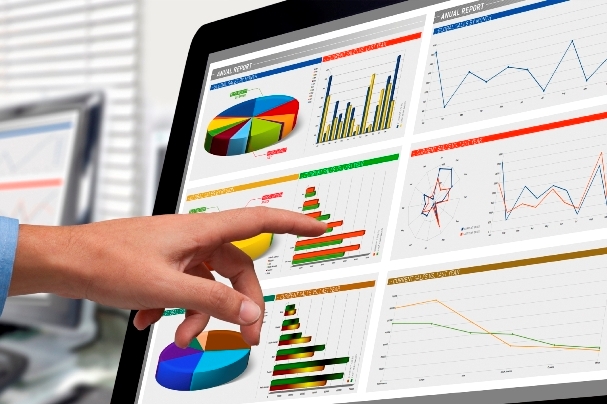Innovation continues to produce unprecedented advances that transform the world around us, empower people and allow the growth of our economies.
However, this digital transformation can only give us its maximum potential if we exploit the power of the data.
That’s right, we are going through a time of data revolution. This is driven not only by the abundance of current data, but by fundamental technologies that change the way we collect, store, analyze and transform information.
In the last 10 years more information has been created than in the entire history of mankind. On the Internet, every minute 6 articles are published on Wikipedia, 204 million emails are sent, 47,000 applications for Smartphone and tablets are downloaded, more than 100 new accounts are opened on LinkedIn and 320 on Twitter, 277,000 logins are made on Facebook. they suppose 6 million views, 100,000 tweets are written, 30 hours of video are uploaded to YouTube and 1.3 million videos are seen. The three technologies that have motivated mainly the birth of the discipline of Big Data are mobile devices with Internet connection, electronic commerce and social networks. Currently there are approximately 5,200 million mobile devices in use around the world.

A study by OBS Business School presented in 2018 at a global level, indicates that 79% of companies believe that Big Data will improve their decision-making, 58% believe that it will be a determining factor in success and 36% already obtain advantages competitive 29% of companies do not have initiatives around Big Data, mainly due to budgetary issues, technical knowledge about technology, non-identification of their ROI or lack of cultural preparation by the company.
What is the importance of Big Data for companies?
Did you know that the industry is growing more and more and scientific data experts are scarce? Nowadays, billions of data are generated in the network, a good analysis and interpretation of the information that all this produces, becomes, more than a fundamental tool, a necessity for organizations. In fact, one of the most obvious consequences of the impact of new technologies in the labor field is the arrival of professional profiles that were previously considered non-existent, but that now, are proposed to respond to the requirements of companies.
Now, what does it mean to be a Data Analyst? What is truly its relevance, considering that it is one of the most acclaimed positions in recent times?
Compiling many data in different formats (whether in text documents, image and video files, web pages, content in different social networks, applications, mobile devices, among others), in order to translate them into meaningful information for companies, Data Analyst is the one in charge of broadening panoramas that previously were full of uncertainty. In short, is who comes to give importance to the task of collecting data and information.
In this way the companies that know how to take advantage of this data and all the value that they contain, will be taking the best decisions since this integration of the information are the motors that move the companies to overcome.
The vision of companies that use data analytics
The main purpose of investing in analytics is to influence business results. Organizations that derive value from analytics solutions are those that are able to measure the impact on key performance indicators.
To achieve success in this process in companies requires a cultural change in these areas, namely:
Leadership
Companies that succeed in the analytical and Big Data era do so, not only because they handle better data, but also because they have leadership teams that set clear goals, define what success is and ask the right questions.
For this reason, we must have a team with leadership that can detect a great opportunity, understand how a market is developing, think creatively and propose innovative offers, articulate a convincing vision, deal effectively with customers, employees, shareholders and other parties. interested.
Technology
The tools available to manage the volume, speed and variety of data have improved a lot in recent years. For example; Tableau is one of the fastest data visualization tools and BI (Business Intelligence) in evolution. It is very quick to implement, easy to learn and very intuitive to use. Python is increasingly used this language. Both by computer scientists and scientists and engineers. And other tools like R +, you can do thousands of tests like Minitab or SPSS
Decision making
In the era of Big Data, information is created and transferred, and experience is often no longer where it used to be: in one person. Companies should create a functional structure and flexible enough to maximize cooperation through data analytics.
What are the characteristics of companies that use data analytics?
The handling of large data is characterized by the following:
Volume
Each day about 2.5 exabytes of data are created and this number doubles every 40 months. Every second Internet crosses and stores data and more data. This gives companies the opportunity to work with many petabyes of information in a single data set and not only through the Internet.
Speed
The information in real time makes it possible for a company to be much more agile than its competitors. For example, with mobile phone location analytics you can find out how many people are in a store and you could estimate that day’s sales even before the store records those sales. Quick predictions like these can give you a competitive advantage.
Variety
This multitude of data is collected from several sources: social networks, images, videos, sensor readings, GPS signals from mobile phones, etc …
Many of these sources of analytics are relatively new. Facebook, for example, was launched in 2004, Twitter in 2006. The iPhone was unveiled a few years ago and the iPad in 2010. The same goes for smartphones and other mobile devices that now provide huge data flows linked to people , activities and locations.
Mobile phones, online purchases, social networks, electronic communication, GPS and all instrumented machinery produce gigantic data flows as a by-product of their ordinary operations. So, each one of us is now a great data generator.

The strategy of the data
Data analytics is a crucial step today in the decision making of a company, so many companies are taking the decision to implement tools of this type in their business model. Nowadays, companies are 5% more productive, and 6% more profitable than their competitors. The explanation is simple, the use of data analytics leads to better predictions and better predictions produce better decisions.
For large companies, using this type of resources requires following some steps that will be crucial to obtain the best results, so I am given the task in this article to summarize the phases of using an analytical tool, ranging from the design of strategies and objectives to the own decision making based on the reports and generated reports.

The data makes a difference
In Barcelona – Spain is taking advantage of the data to build a smarter city, and give it the ability to examine traffic patterns of tourists, see where to put more public bicycle stations and identify which corners of the city need more ATMs.
In the UAE, new data tools are being used to design the world’s first positive energy building that effectively produces more energy than it consumes.
In Kenya, mobile data is being used to identify patterns of malaria infection and identify points of case accumulation to guide the government in its eradication efforts.
Farmers from the USA (Iowa) to India are using data from seeds, satellites, sensors and tractors to make better decisions about what to grow, when to plant, how to keep track of the freshness of food from farm to farm. table and how to adapt to changes in the climate.
The information in the companies will be a step back if it lacks intelligence and agility in the data. Intelligent business analysis, complementing business intelligence, will be what puts your organization in the 21st century.
If you have not yet experimented with Business Intelligence solutions to extract all the value from your data, do not miss the opportunity to improve your customer orientation with them, your processes with solutions adapted to your real needs.
YOU WANT TO LEAVE YOUR THEME COMMENT
